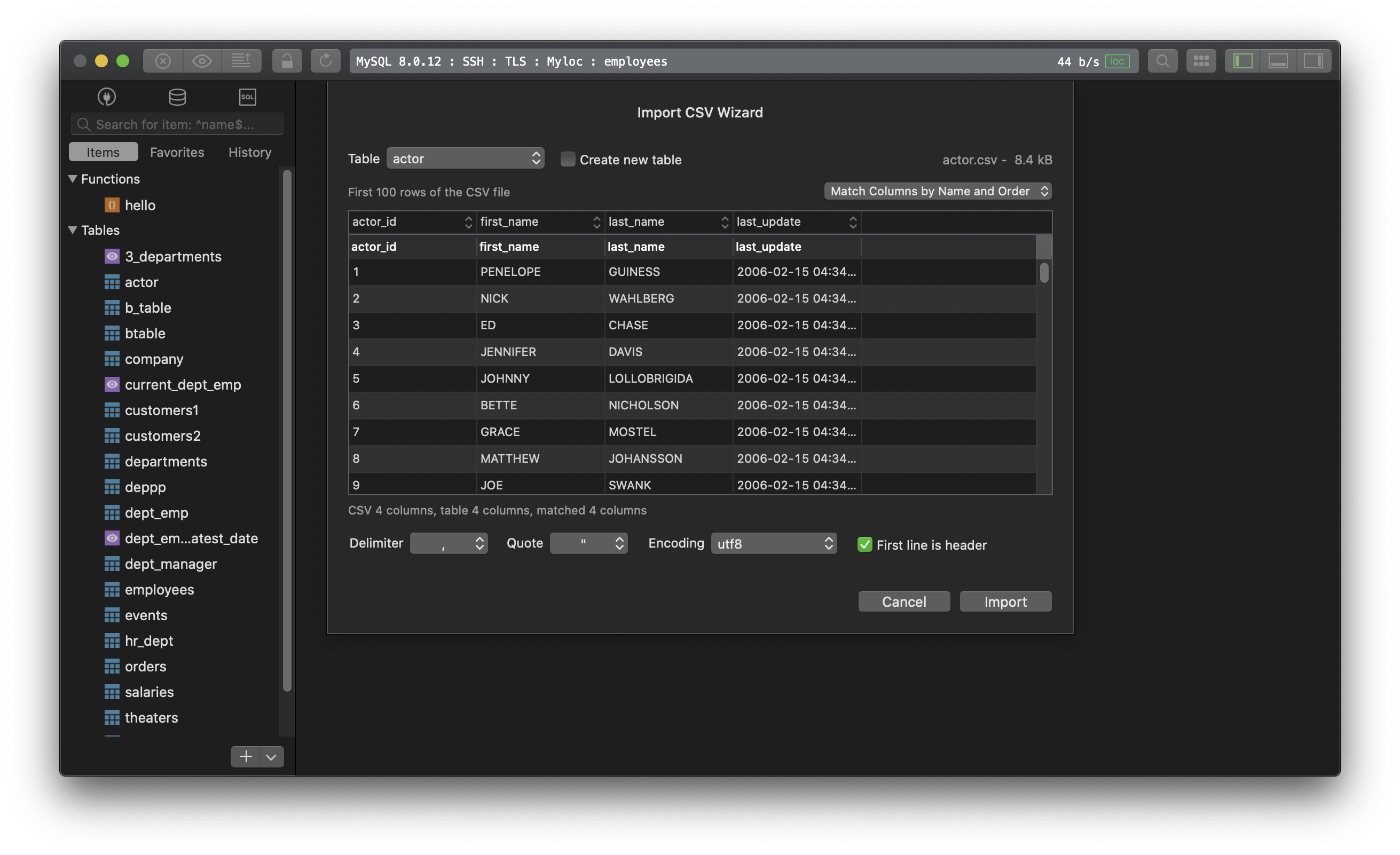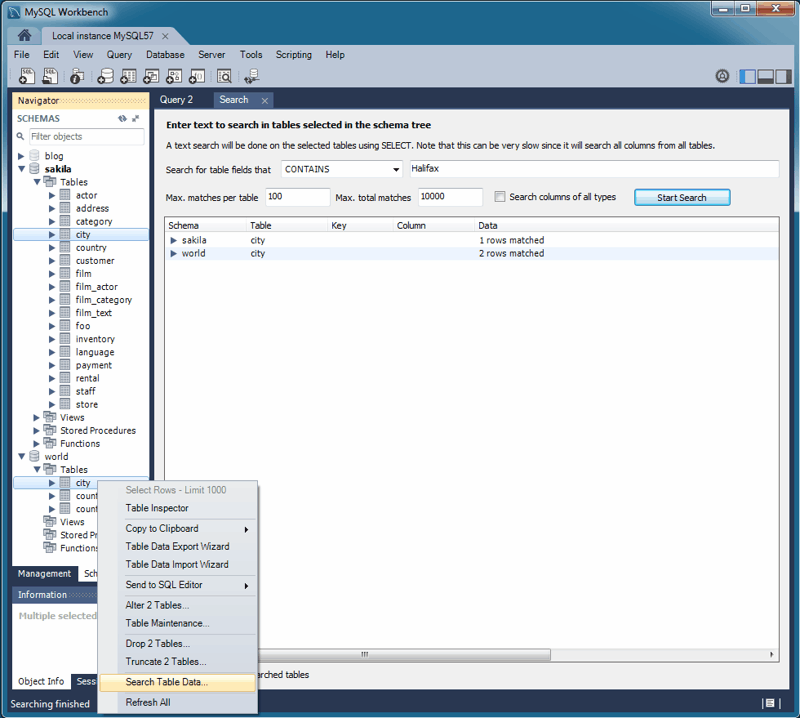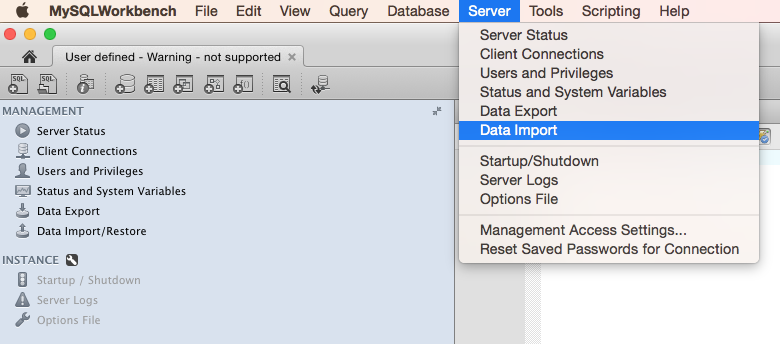

- #Mysql workbench import sql file zip file
- #Mysql workbench import sql file password
- #Mysql workbench import sql file download
Select Import from Self-Contained File and enter the location in the File Path text field.Ĭlick Start Import in the bottom right and enter the database password if prompted. This process may take several minutes depending on the size of your database backup. Select which tables from the backup you would like to restore. Select Import from Dump Project Folder and enter the location in the Folder Path text field.

This step will differ depending on which option you chose. When you created the backup you were presented with the option to export your database tables to a folder or a single self-contained file.
#Mysql workbench import sql file password
Select the database you want to import data in to.Įnter your database password if prompted. Restore your database from a previous backup (Import) Step 1
#Mysql workbench import sql file zip file
Make sure the zip file only contains one sql file. Export to Dump Project Folder: MySQL Workbench will create a separate backup file for each table in your database, which will make it possible to store selected tables in the future without the need to restore the entire database. unzip -p unzips to a pipe, so that you can pipe that into your database command.However, Export to Self-Contained File is more commonly used for most Fasthosts customers:

There are two options available and you can use either. Step 3įrom the right hand pane, select the tables that you want to include in your export.Ĭhoose where you would like to save your database backup. In the left pane, select your database by ticking the checkbox next to it.Įnter your database password if prompted. In Default Target Schema, select the database you want to import the SQL dump to, or create a new empty database via New. This is also sometimes referred to as a data dump. You have to select the menu item Server -> Data Import -> Import from Self-Contained File and select the SQL file containing the database you want to import. MySQL Workbench can export a backup of your database to a file on your local computer. These links will take you to the relevant instructions: Once connected you will be able to backup or restore your database. Define your server connectionīefore you begin you need to add a connection to the database server. Enter a Login Name and a Password, then confirm the password. Click Users and Privileges under the Management pane. You can add a user and give assign privileges.
#Mysql workbench import sql file download
You can find more information and download the software from. Workbench provides the capability to add, edit and manage user privileges. To backup your database using the methods described in this article you will need to have a copy of MySQL Workbench, an application developed by the producers of MySQL. Initially CPU peaked at 90% and DiskIO was at 200MB/s then bounced up/down from around the 75-80MB/s and has settled to a fairly consistent 17.5MB/s with a slight downward trend.We strongly recommend that you create regular backups of your database so it can be easily and quickly recovered in the unlikely event that your data is lost or becomes corrupted. The VM performance graphs from vCenter show: But do read the documentation because these are disabled by default for security reasons. I recommend to skip using Workbench, and use the command-line mysqlimport tool instead, or LOAD DATA. Its very slow, and is reported to lose data during import. The VM specs are:ħ50 GB disk - Thick Provisioned/Local RAID5 Storage(8x10KSAS)/Unlimited IOPS In my opinion, MySQL Workbench is terrible at data import. However the import takes more than 24 hours. We import it directly on the MySQL server via the command-line client by doing: The file they give me is about 37GB uncompressed. We have a couple of MySQL 5.5 servers running on Ubuntu 14.04 for our QA and DEV environments and every so often we restore a backup SQL file we get from our production OPS team so we are testing with the same data.


 0 kommentar(er)
0 kommentar(er)
